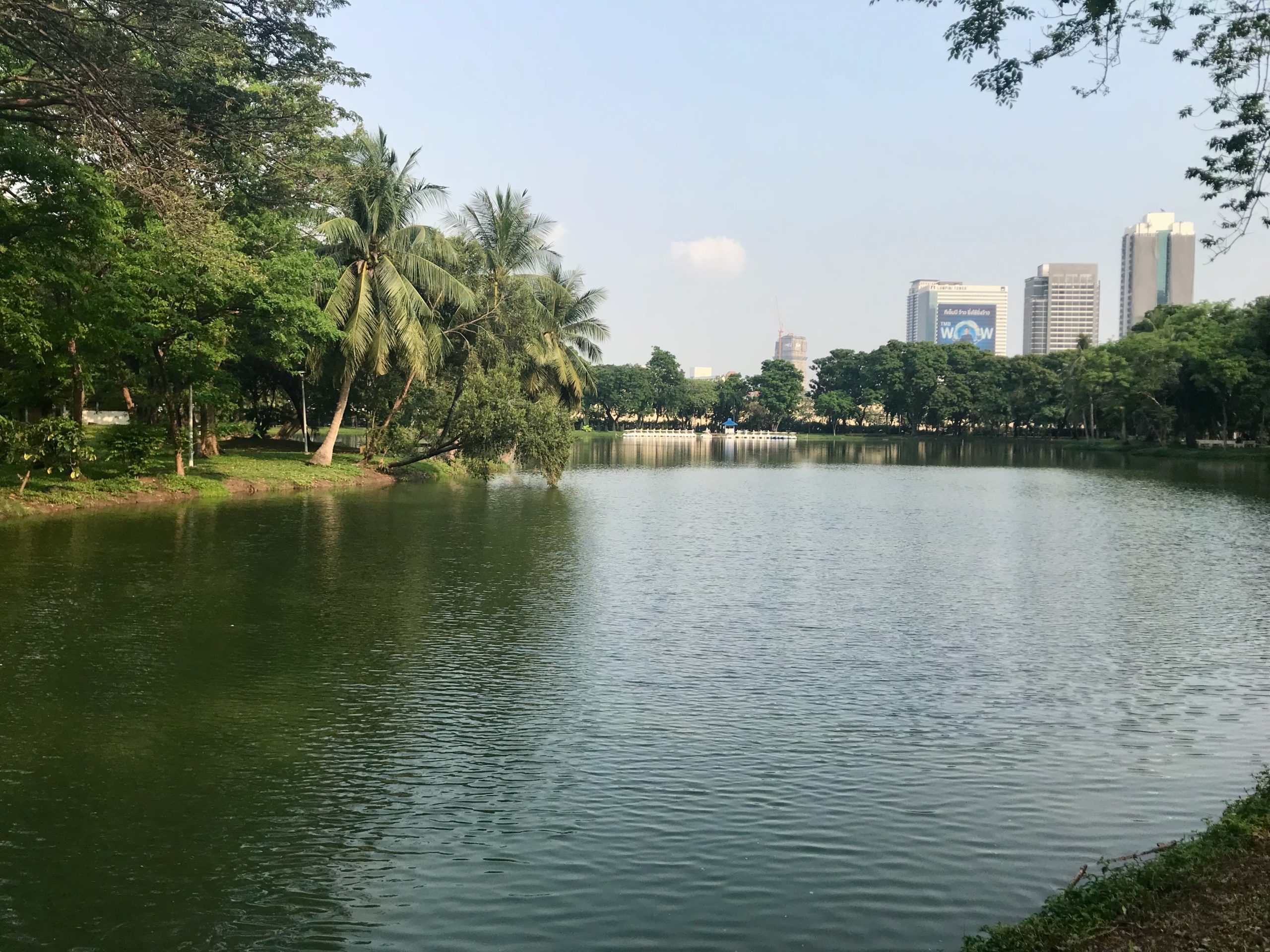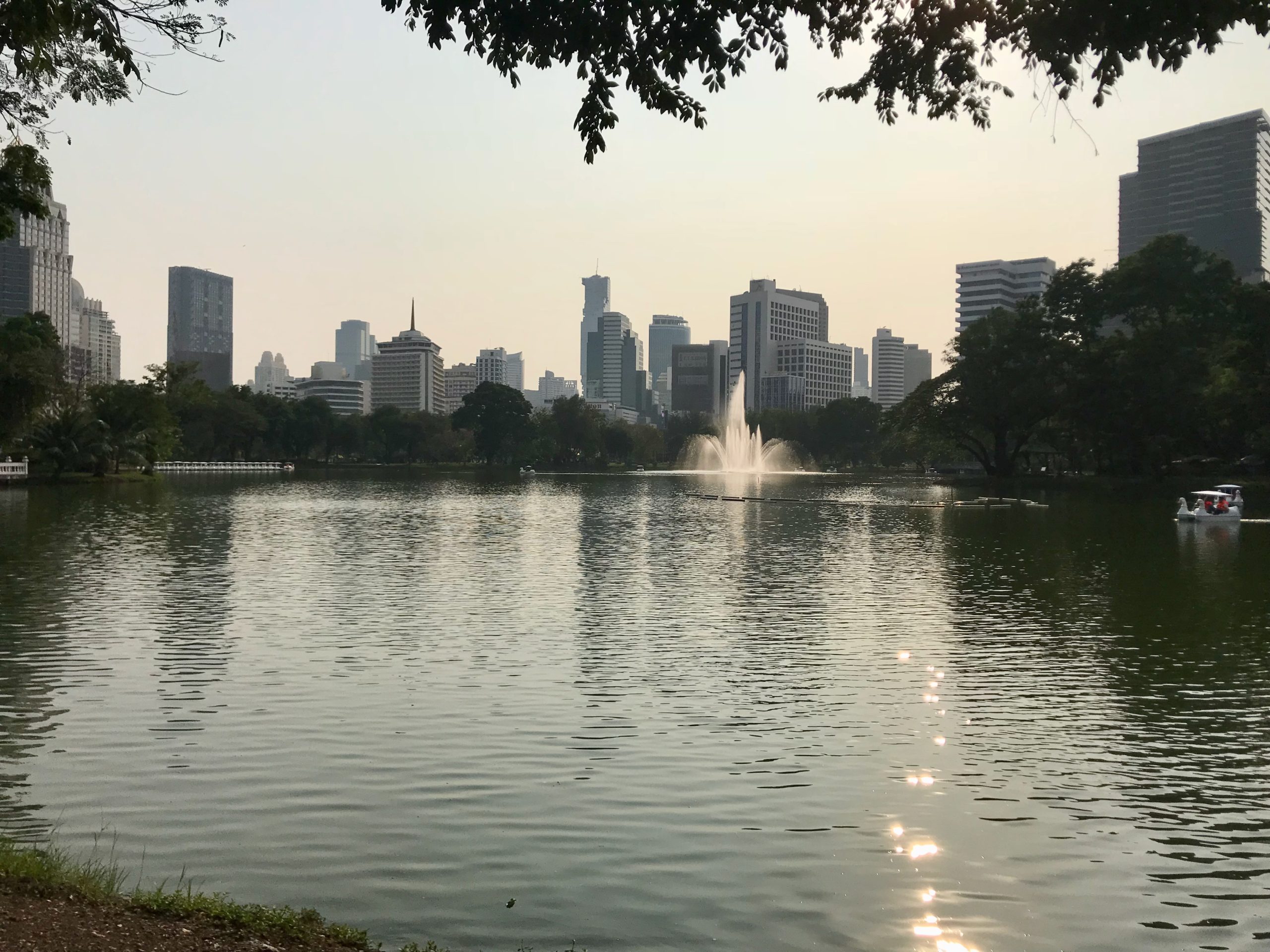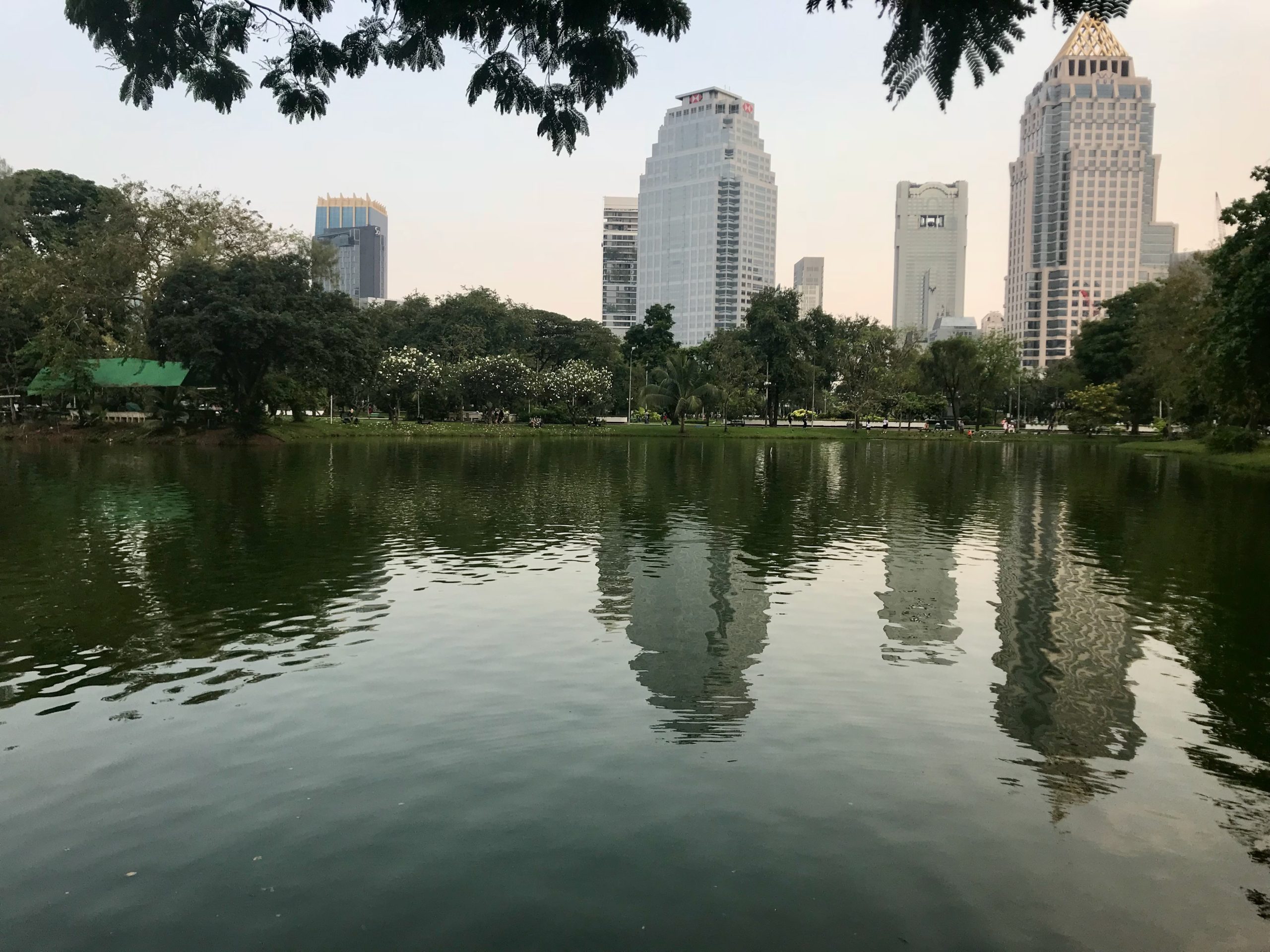Where Nature and Culture Meet in Bangkok
Lumphini Park in Bangkok, a vast green sanctuary covering 58 hectares, stands as the largest and most iconic public park in the Thai capital. Located in the central business district, this urban retreat offers a striking contrast to the city’s dense skyscrapers and constant motion.
Whether you’re a morning jogger, a yoga enthusiast, a nature lover, or simply seeking a peaceful break, Lumphini Park invites everyone to enjoy its shaded paths, peaceful lakes, and vibrant biodiversity. It is both a recreational space and a cultural landmark—a place where urban life and natural beauty coexist harmoniously.
The History of Lumphini Park
Lumphini Park was established in 1925 during the reign of King Vajiravudh (Rama VI), who transformed private royal land into a gift for the people. At the time, Bangkok was expanding, and green spaces were becoming increasingly rare. This park was intended not only as a recreational area, but also as a symbol of modern civic development and national pride.
Creation and Evolution

Initially designed as an exhibition space to showcase Thai products and crafts, the park evolved into a beloved public space offering shade, sports, and serenity. During World War II, it served as a military camp and later returned to its peaceful purpose. Over the decades, it has undergone multiple renovations while preserving its essence as a symbol of Bangkok’s resilience and transformation.
The Significance of the Name
The name “Lumphini” is derived from Lumbini in Nepal, known as the birthplace of the Buddha. This connection adds a spiritual layer to the park’s identity, positioning it not only as a place of leisure but also as a refuge for inner peace and mindfulness. It reflects Thailand’s deep Buddhist heritage and the cultural importance of harmony between humans and nature.
Nature and Biodiversity in the Heart of the City
Despite being surrounded by high-rise buildings and busy roads, Lumphini Park is home to a surprising array of flora and fauna. Its biodiversity is one of its most fascinating aspects, offering a rare glimpse into Thailand’s ecological richness—without leaving the city center.
Plant Life and Botanical Treasures
The park is home to hundreds of plant species, from native Thai flora to rare tropical imports. The diversity of vegetation creates a dynamic landscape that changes with the seasons and offers different atmospheres throughout the day.
- Giant Tropical Trees: Towering above the paths, they provide shade and shelter for birds and small mammals.
- Exotic Flowering Plants: Their colorful blossoms attract butterflies and pollinators, enhancing the park’s ecosystem.
- Lotus Ponds: These iconic water flowers bloom in calm basins, adding a meditative atmosphere to the scenery.
- Bamboo Clusters: Creating natural screens and soothing rustling sounds in the breeze.
- Tree Ferns: A relic from prehistoric times, they contribute to the park’s ancient, jungle-like feel.
- Orchids and Epiphytes: Clinging to tree trunks, they bloom discreetly and delight observant visitors.
Botany lovers and casual strollers alike will find joy in observing the interplay of colors, textures, and scents throughout the park.
Wildlife and the Famous Monitor Lizards
Perhaps the park’s most famous residents are the monitor lizards. These impressive reptiles, sometimes exceeding two meters in length, roam freely among the bushes, along the lakeshores, and even across the walking paths. While they may seem intimidating, they are generally harmless and are an integral part of the park’s identity.
- Birds: Herons, kingfishers, pigeons, and mynas can be spotted throughout the park, especially near water sources.
- Mammals: Squirrels are common, often seen leaping between trees or scavenging near picnic areas.
- Aquatic Life: The park’s ponds are home to fish, turtles, and frogs, all contributing to the ecosystem’s balance.
- Insects: Dragonflies and butterflies abound, especially in the morning light or near the gardens.
This rich biodiversity coexists with human visitors thanks to conservation efforts and mutual respect between people and wildlife.
Activities and Leisure in Lumphini Park
From the first light of dawn until well after sunset, Lumphini Park buzzes with activity—yet never feels chaotic. Locals and tourists enjoy the park for exercise, recreation, family outings, or quiet reflection. It is an inclusive space where wellness and culture meet.
Physical Activities
- Yoga and Tai Chi: Mornings are the best time for these calming practices. Locals gather in designated areas to stretch, meditate, and prepare for the day ahead.
- Jogging: A designated path circles the park, measuring roughly 2.5 kilometers. It’s shaded, scenic, and popular at sunrise and sunset.
- Cycling: Allowed only before 3 PM, cycling is a gentle way to explore the park’s size and layout.
- Paddle Boats: Available for rent on the central lake, they offer a tranquil way to see the park from the water.
- Group Fitness Classes: Occasionally, the park hosts free open-air aerobics and dance classes, especially on weekends.
Family and Cultural Activities
- Children’s Playgrounds: Safe and shaded, these zones are ideal for younger visitors.
- Open-air Library: A hidden gem offering books and magazines for those looking to read under a tree.
- Outdoor Events: From concerts to cultural festivals, the park transforms into a community hub during special occasions.
- Picnic Zones: Many families and couples bring mats, snacks, and drinks to enjoy the breeze under the trees.
Annual Events and Festivals
Throughout the year, Lumphini Park hosts a variety of cultural and festive events:
- Music in the Park: Classical and traditional Thai music concerts take place regularly during the cool season.
- Art Installations: Outdoor exhibits by Thai and international artists bring color and creativity to the park’s pathways.
- Food Fairs: During holidays, pop-up markets serve delicious local dishes and handcrafted products.
- Sporting Events: Community runs, cycling races, and martial arts demonstrations draw both participants and spectators.
An Urban Refuge for Mind and Body

More than just a public park, Lumphini is a sanctuary for mindfulness. With every step, you leave the chaos of Bangkok behind—replaced by birdsong, leafy canopies, and lakeside breezes. The park is where people walk slowly, speak softly, and reconnect with what matters.Even a short visit can be deeply restorative. Visitors often report that Lumphini feels like a small world within itself—calmer, quieter, yet still full of life and stories.
Environmental Challenges and Conservation Efforts
Like all urban green spaces, Lumphini Park faces threats from pollution, construction, and climate change. Bangkok’s dense traffic contributes to air pollution, and increasing temperatures strain the park’s vegetation and wildlife.
Preservation Measures
- Water Cleanup: Regular cleaning of ponds and drainage systems ensures healthy aquatic life.
- Native Tree Planting: Ongoing reforestation using local species helps reinforce the park’s natural ecosystem.
- Wildlife Protection: Specific zones have been created to safeguard monitor lizards and bird habitats.
- Waste Management: Recyclable bins and anti-littering campaigns help keep the park clean and green.
- Educational Outreach: Park staff and volunteers lead programs to teach children about biodiversity and sustainability.
Practical Information
Opening Hours

The park is open every day from 4:30 AM to 9:00 PM. Early mornings are ideal for exercise, while evenings are perfect for a quiet stroll or picnic. Bicycles are only allowed until 3:00 PM to preserve the calm atmosphere later in the day.
Best Time to Visit
The cool season from December to February is the most comfortable. You’ll enjoy pleasant temperatures and lower humidity—ideal for exploring nature or attending an event.
How to Get There
By MRT: Take the subway to Lumphini or Silom station, both with direct access to the park.
By BTS: Ride the Skytrain to Sala Daeng station, then walk five minutes to the entrance.
Public transportation is recommended, as parking is limited and traffic in the area can be dense.
Conclusion
Lumphini Park in Bangkok offers a powerful reminder that green spaces matter. Whether you’re stretching in the morning sun, paddling across the lake, or simply watching birds from a shaded bench, the park nurtures body, mind, and spirit.
Its enduring beauty and ecological richness make it a cornerstone of Bangkok’s identity—and a must-visit for anyone seeking calm, culture, or connection in one of Asia’s most exciting cities.
🎥 Watch this aerial view of the park:
